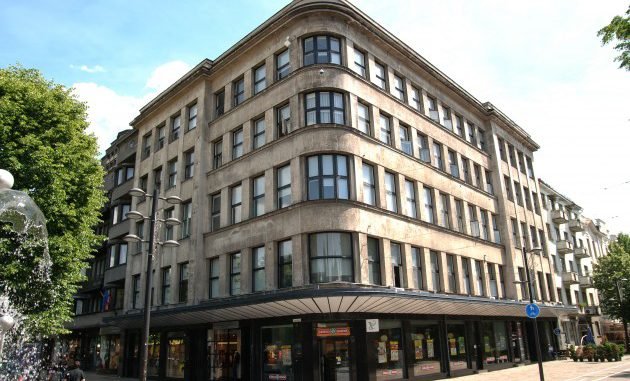
The planned actions are a continuation of the KTU Investment Project: in 2014 and in 2015 Lithuanian Government has authorised the 1st and the 2nd stages of the Project by permitting to sell 7 state-owned buildings entrusted to the University.
In July 2018, the Government has issued a decree authorising the 3rd stage of the Investment Project and to sell 5 more real estate objects. The estimated value of the assets is 3.49 million euros. The funds will be used for significant improvements of study infrastructure, thus creating first-rate conditions for attracting and retaining talented students and teachers. It is expected that all the buildings, which floor area takes up approximately 13 thousand square meters, will be sold by the end of the year.
In the public auction which will take place in October, the following real estate objects located in Kaunas centre will be sold: former building of the Faculty of Humanities (Gediminas Street 43, floor area 1,477.32 m2), former building of the School of Economics and Business (Kęstutis Street 8, floor area 1,812.12 m2), former building of the Faculty of Mechanical Engineering and Design (Kęstutis Street 27, floor area 7,033.18 m2), former building of School of Economics and Business (Laisvė Avenue 55, floor area 2,669.68 m2) and former dormitory (Mickevičius Street 39, floor area 703.92 m2).
By renovating old premises, multifunctional learning area with a library and a computer class will be established in the KTU Campus, active learning classes and spaces in 8 faculties, Design Thinking and open group learning zones in 6 faculties and open-access technology areas for team work in 3 faculties will be created.
“In order to be competitive in national and international arena, the University must invest into renewal of its infrastructure, which we are attempting to do by optimising our activities and infrastructure. Old, unused buildings, which do not meet the requirements of the contemporary university is a perfect source of the needed income. We are very grateful to the Government and the Ministry of Education and Science who are listening and understanding our arguments. We believe that our endeavours will open similar possibilities for other schools of higher education”, says Jurgita Šiugždinienė, KTU Rector ad interim.
She emphasises that by selling the buildings the University will save significant funds, which otherwise are being spent on maintenance, heating and security of the unused premises.
In 2014, during the 1st stage of the Investment Project 4 out of 5 real estate objects in Kaunas were sold: former premises of KTU Institute of Materials Science (Savanoriai Avenue 271, floor area 1,158.23 m2), former laboratory of packaging research (Smalininkai Street 2, floor area 2,701.89 m2), former premises of KTU Food Institute (Taika Avenue 92, floor area 8,268.46 m2) and former KTU workshops (Raktažolės Street 21, floor area 2,817.16 m2). KTU’s revenues from real estate sales were 2.9 million euros.
In 2015, during the 2nd stage of the Investment Project 3 out of 5 buildings were sold: flats in Šventoji resort (Mėguva Street 12a, floor area 59.85 m2), resort cabins in Salučiai village, Veisiejai municipality, Lazdijai region (floor area 136.47 m2), various functional buildings with heat supply line (Taikos Avenue 92, Kaunas). KTU’s revenues from real estate sales were 136.4 thousand euros.
The funds acquired at this stage will be invested into the development of the experimental and prototyping laboratories’ centre M-Lab (funded through the European Union project) as a part of institutional contribution.
KTU is the first higher education institution in Lithuania to sell unused buildings in a public auction and to invest the funds gained into improvement of infrastructure. This opportunity emerged on 27 August 2014, when Lithuanian Government issued the decree authorising the trial project allowing to sell real estate objects owned by the State and entrusted to the University and in such a way to invest unused buildings into increasing the University’s financial assets.
